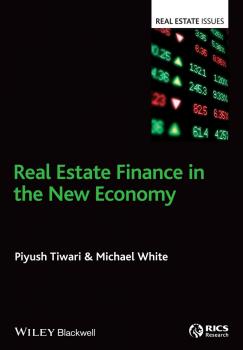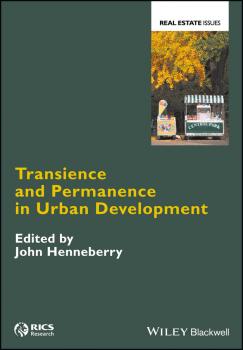ТОП просматриваемых книг сайта:















Недвижимость
Различные книги в жанре Недвижимость, доступные для чтения и скачиванияProperty Boom and Banking Bust. The Role of Commercial Lending in the Bankruptcy of Banks - Colin Jones
Аннотация
A fascinating analysis of the critical role commercial property investment played in the economic boom and bust during the global financial crisis The unprecedented financial boom stretching from the mid-1990s through 2008 ultimately led to the deepest recession in modern times and one of the slowest economic recoveries in history. It also resulted in the emergence of the draconian austerity policies that have swept across Europe in recent years. Property Boom and Banking Bust offers an expert insight into the complex property market dynamics that contributed to the Great Financial Crisis of 2008 and its devastating economic consequences. It is the first book to focus on a woefully underreported dimension of the crisis, namely, the significant role that lending on commercial property development played in the crisis. Among other key topics, the authors explore the philosophical and behavioral factors that propelled irresponsible bank lending and the property boom; how it led to the downfall of the banks; the impact of the credit crunch on the real estate industry generally in the wake of the financial crisis; the catastrophic effects the property bust had on property investors, both large and small; and how the financial institutions have sought to recover in the wake of the financial crisis. Provides valuable insights into what happened in previous booms and busts, particularly in the 1970s and 1980s, and how they compare with the most recent one Offers an expert assessment of the consequences of the global financial crisis for the banking system and the commercial property industry Examines strategies banks have used to recover their positions and manage the overhang of indebtedness and bad property assets Addresses strategies the real estate industry have used to recover from the collapse in property values Written in an accessible style, and featuring numerous insider case accounts from property bankers, Property Boom and Banking Bust disentangles the complex, tightly-woven factors that led to the Great Financial Crisis of 2008, while offering powerful lessons for property industry professionals on how to avoid having history repeat itself.
Аннотация
In many public sector organisations, there has been little or no adoption of a proactive asset management strategy. Where an extensive property portfolio exists, this can result in poor overall utilisation of the portfolio, exemplified by excessive vacant property or properties not being put to best use. In such situations there is a risk that the building stock deteriorates more rapidly than expected, leading to expensive maintenance and repair charges. Lack of a proactive asset management strategy will impact on the services delivered by such organisations. Public Sector Property Asset Management covers all aspects of asset management in the public sector, including the overall concept, the development of asset management strategies and the implementation of asset management practices. It evaluates asset management strategies, processes and practices to show how effective management of property assets support business activities or service delivery functions. The reader will understand the importance of improving decision-making through the recognition of all costs of owning and operating those assets throughout their lifecycle, leading to improved business process activities or service delivery functions which greatly assist in meeting the social and economic objectives of such organisations. Written for all practitioners currently involved in asset management, the book will also be useful in the university environment, to those teaching, researching or learning about asset management in the public sector.
Аннотация
The financial deregulation of the last quarter century has meant large flows of funds around the world seeking the highest risk-adjusted return for investors. Real estate is now established as an important asset class and advances in information technology provide the necessary tools to complement global developments in real estate finance and investment. A variety of investment vehicles have emerged, andReal Estate Finance in the New Economy examines these along with financing and risk in the context of globalization, deregulation and an increasingly integrated international world economy by exploring questions like: How have real estate financial structures evolved as economies grow and become internationalised? What role do economic change and financial systems play in the development of real estate investment? Are the risks associated with the ‘new economy’ really new? What is the future direction for real estate financing? The authors develop an economic framework for discussions on individual financial products to examine how real estate financial structures change with economic growth and internationalisation and also to show how developments in real estate finance impact economic growth.
Аннотация
This book provides evidence on how housing finance markets developed across Europe. The objective of the text is to bring together up to date material from across Europe which will help to clarify (i) how national housing finance markets have dealt with the challenges of deregulation and privatisation since the 1980s,(ii) how the financial crisis has impacted on the structure of the industry and the range of financial instruments available, (iii) how governments and the EU have responded to increasing risks and higher indebtedness in most West European countries and the need to grow new finance markets in Eastern Europe, and (iv) how changing housing finance markets impact on the capacity to provide adequate affordable housing into the future.
Аннотация
Temporary urban uses – innovative ways to transform cities or new means to old ends? The scale and variety of temporary – or meanwhile or interim – urban uses and spaces has grown rapidly in response to the dramatic increase in vacant and derelict land and buildings, particularly in post-industrial cities. To some, this indicates that a paradigm shift in city making is underway. To others, alternative urbanism is little more than a distraction that temporarily cloaks some of the negative outcomes of conventional urban development. However, rigorous, theoretically informed criticism of temporary uses has been limited. The book draws on international experience to address this shortcoming from the perspectives of the law, sociology, human geography, urban studies, planning and real estate. It considers how time – and the way that it is experienced – informs alternative perspectives on transience. It emphasises the importance, for analysis, of the structural position of a temporary use in an urban system in spatial, temporal and socio-cultural terms. It illustrates how this position is contingent upon circumstances. What may be deemed a helpful and acceptable use to established institutions in one context may be seen as a problematic, unacceptable use in another. What may be a challenging and fulfilling alternative use to its proponents may lose its allure if it becomes successful in conventional terms. Conceptualisations of temporary uses are, therefore, mutable and the use of fixed or insufficiently differentiated frames of reference within which to study them should be avoided. It then identifies the major challenges of transforming a temporary use into a long-term use. These include the demands of regulatory compliance, financial requirements, levels of expertise and so on. Finally, the potential impacts of policy on temporary uses, both inadvertent and intended, are considered. The first substantive, critical review of temporary urban uses, Transience and Permanence in Urban Development is essential reading for academics, policy makers, practitioners and students of cities worldwide.
Аннотация
New Economic Thinking and Real Estate offers a modern and distinctive approach to forecasting and understanding property markets. With this book, students will develop an intuitive ability to interpret economic indicators and acquire the confidence to assess property markets. The book is divided into three parts: Part A: Resource choices – deals with microeconomics; Part B: Financial Systems – seeks to make sense of the macroeconomic scene and Part C: Measuring and Forecasting.
Аннотация
All countries aim to improve housing conditions for their citizens but many have been forced by the financial crisis to reduce government expenditure. Social housing is at the crux of this tension. Policy-makers, practitioners and academics want to know how other systems work and are looking for something written in clear English, where there is a depth of understanding of the literature in other languages and direct contributions from country experts across the continent. Social Housing in Europe combines a comparative overview of European social housing written by scholars with in-depth chapters written by international housing experts. The countries covered include Austria, Denmark, England, France, Germany, Hungary, Ireland, The Netherlands and Sweden, with a further chapter devoted to CEE countries other than Hungary. The book provides an up-to-date international comparison of social housing policy and practice. It offers an analysis of how the social housing system currently works in each country, supported by relevant statistics. It identifies European trends in the sector, and opportunities for innovation and improvement. These country-specific chapters are accompanied by topical thematic chapters dealing with subjects such as the role of social housing in urban regeneration, the privatisation of social housing, financing models, and the impact of European Union state aid regulations on the definitions and financing of social housing.
Аннотация
From the Foreword by Dr Valmond Ghyoot, Emeritus Professor of Real Estate, University of South Africa: ‘The valuation profession, the legal profession, property industry participants in general and students will welcome publication of this book. Investors, environmental groups and affected property owners will find essential information for use in their decision-making, development objections and claims. My hope is that [it] will provide answers where required and that it will help to improve the professional standard of valuations and appraisals internationally. I trust that it will also raise the standard of testimony in damages cases. If so, the editors and contributors will have succeeded in documenting the state of the art in this relatively unexplored terrain.’ As a reference source, this book will help quantify the negative impacts on property values of high voltage overhead transmission lines, cell phone towers, and wind turbines. It gives a modern perspective of the concerns property owners have about the siting of industrial structures used to transmit or generate various forms of energy and how these concerns impact on property values. Studies reveal concerns the public have about devices and structures that emit electromagnetic fields (EMFs) due to their potential health hazards. . Despite some research reports suggesting there are no potential adverse health hazards from high voltage overhead transmission lines (HVOTLs) and towers, there is still on-going concern about the siting of these structures due to fears of health risks from exposure to EMFs, changes in neighbourhood aesthetics and loss in property values. The siting of wind turbines is also receiving community opposition due to noise, light flicker, aesthetic concerns, and loss in property values. The extent to which such attitudes are reflected in lower property values is not well understood. Towers, Turbines and Transmission Lines: Impacts on Property Value outlines results of studies conducted in the US, the UK, Australia and New Zealand and offers guidance to valuers as well as to property/real estate appraisal students and property owners around the world. The book provides defensible tools that are becoming widely accepted to assess the effect that these environmental detriments have on property prices.
Аннотация
'The chapters in this book explore in detail the choices regarding both the structure and administration of the property tax, drawing on the extensive knowledge the authors have acquired in studying property taxes around the world. The chapters provide a wide-ranging treatment of the design choices and administrative tasks, both in terms of the breadth of design options and administrative tasks covered and the depth of the discussion. The authors describe the range of design choices, discuss the associated issues and the advantages and disadvantages for each, and present the criteria to help choose among the options.’ From the book’s Foreword by David L. Sjoquist, Professor of Economics and Dan E. Sweat Scholar Chair in Educational and Community Policy, Georgia State University Property taxation is a key element in providing a solid foundation and a stable funding source for basic public services. Developing and implementing a property tax system is a complex task. This complexity is compounded by the diversity of legal, cultural and historical contexts of policymakers and tax administrators. The World Development Report (1999-2000), Entering the 21st Century puts fiscal decentralization at the top of the development agenda. This makes local taxation – and especially the property tax option – of critical importance to both tax and land policy, as well as the broader development agenda. A Primer on Property Tax: Administration and Policy provides the reader with an analysis of issues surrounding property tax, including economics, law, public finance, decentralisation, valuation, GIS and property tax reform. A key strength of the book lies in the vast international experience of the authors and the book will provide for the first time material which is topical, cutting-edge and highly relevant to many of the disciplines involved in property taxation. The authors examine the criteria applied to evaluate the strengths and weaknesses of property tax, discuss the main valuation methods and the economic principles underpinning them and review the legal and administrative aspects of property tax worldwide.
Аннотация
Бизнес посуточной аренды квартир является очень востребованным. Это практическое руководство, которое поможет освоить этот бизнес по шагам, чтобы добиться ощутимых результатов в первые 2-3 месяца.










